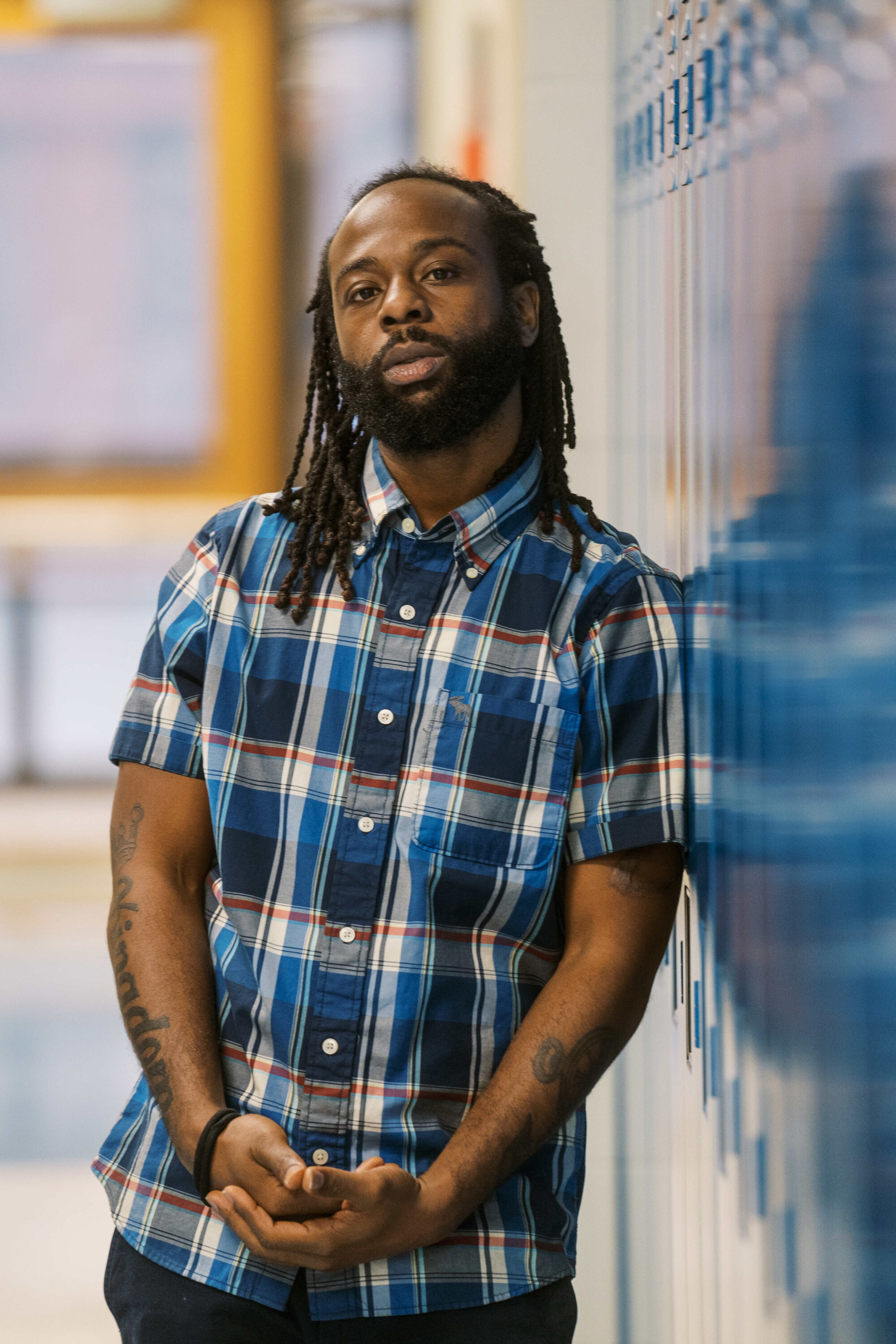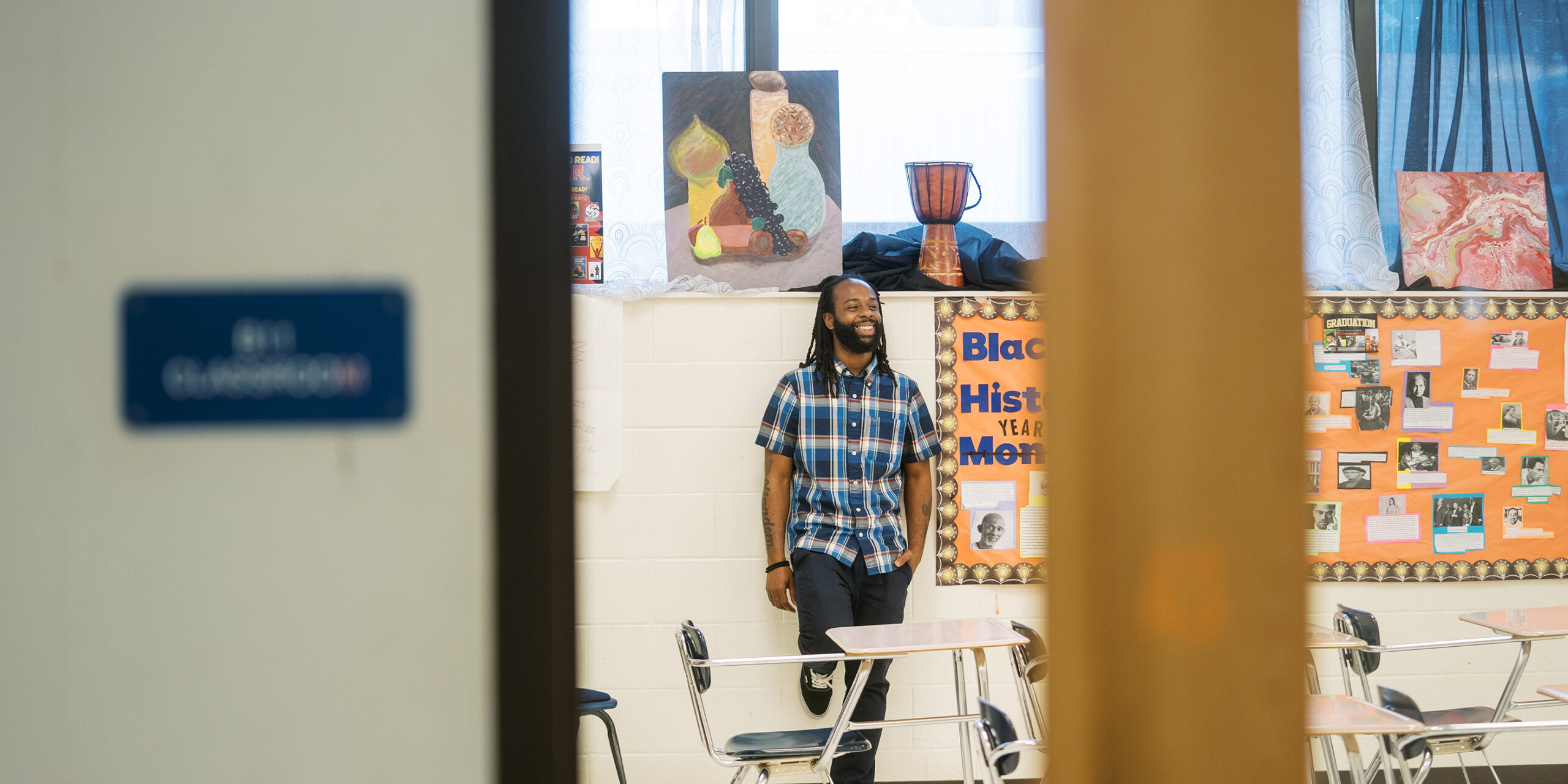When I was a junior in high school, I was kicked out of class for asking the teacher when we were going to learn about Black history. It was Black History Month.
I remember it like it was yesterday. It was the first week of February. Monday passed, no Black history. Tuesday, still no Black history. On Wednesday, I finally spoke up. I asked the teacher, “When are you going to teach us about Black history? Are you going to teach us anything about Black people?” He turned red and said, “I will not deal with this in my classroom,” and asked me to leave. So I tossed my textbook on the ground and walked out of class.
Growing up, I learned a lot of European history in school, like Shakespeare or Victorian literature. I had a sixth-grade teacher who was interested and taught us about Black history — but other than that, I literally do not remember learning anything about Black history in my K-12 education.

Photo by AJ Stegall
Today, it’s not that different. A lot of my students were never taught any Black history until my class. They’re learning about things like the Harlem Renaissance and Reconstruction for the first time — as juniors and seniors in high school. In a way, I can understand why. Black history is graphic and violent, and we don’t want to traumatize our students. But in order to break those barriers, we first have to talk about it.
Black history is important for all students because most of the things that happened in history are still happening today. We think of slavery as a thing of the past, but mass incarceration and its gateway, the school to prison pipeline, are the new slavery. I teach my students about these issues because It helps them understand what kind of society they live in and how this reality came into being.
It’s especially important for Black students: Without understanding what happened and is still happening to their people, they won’t know how to maneuver in society once they step out of my classroom and into the real world. It’s like going into a fire not knowing that you’ll get burned. I want to prepare them for the harsh realities that they’re going to face every day as they become adults.
Black history is hard to talk about, but learning about it builds my students’ confidence and empowers them to take life into their own hands.
Already, I can see the impact on my students after they are introduced to these subjects. They start learning how to think critically and debate with each other. Their parents will call me and say how much they appreciate it because they didn’t know how to introduce some of these ideas to their kids, or when was an appropriate time. Black history is hard to talk about, but learning about it builds my students’ confidence and empowers them to take life into their own hands.
Right now, it’s even more important to have these conversations because of the current debate about teaching “critical race theory” in schools. Oklahoma, where I live, is one of nine states that passed classroom censorship bills last year that try to silence conversations about race and gender. I have chosen to defy the law and have not altered my teaching, but I know a lot of teachers who are afraid to talk about these issues because they could lose their teaching licenses if someone complains and they are found to be in violation of this confusing and overbroad statute. There’s a lot of misinformation out there about teaching race in the classroom, and I hope it doesn’t prevent more students from getting a real and inclusive education — especially during Black history month.

